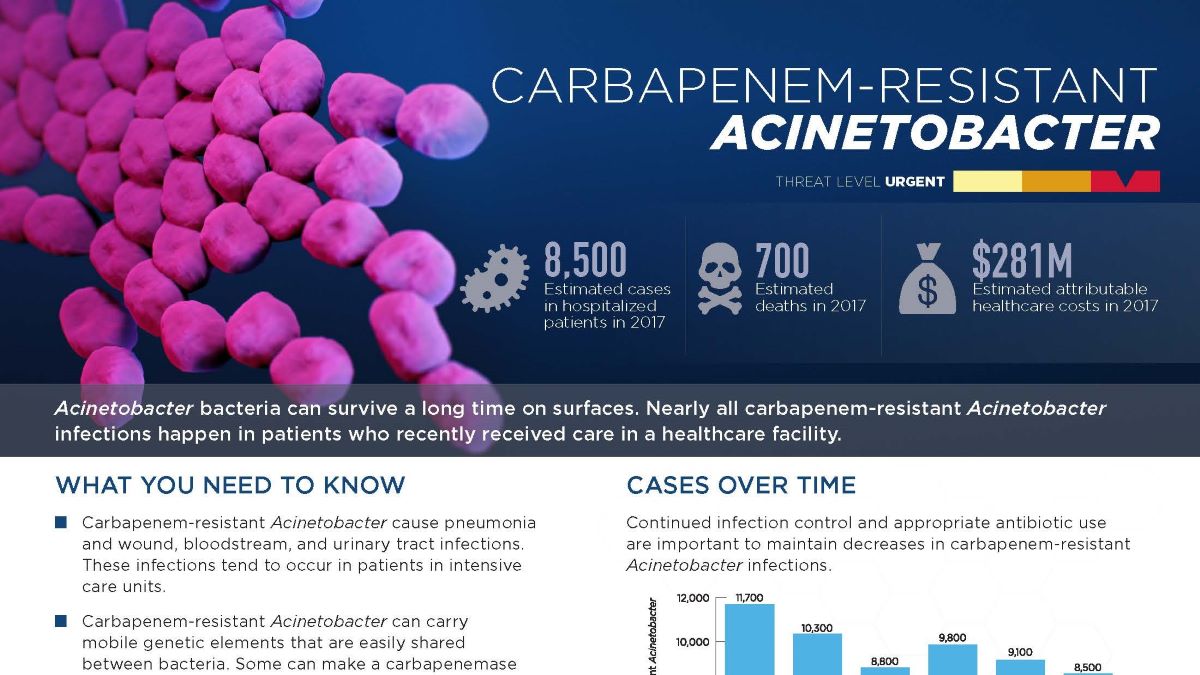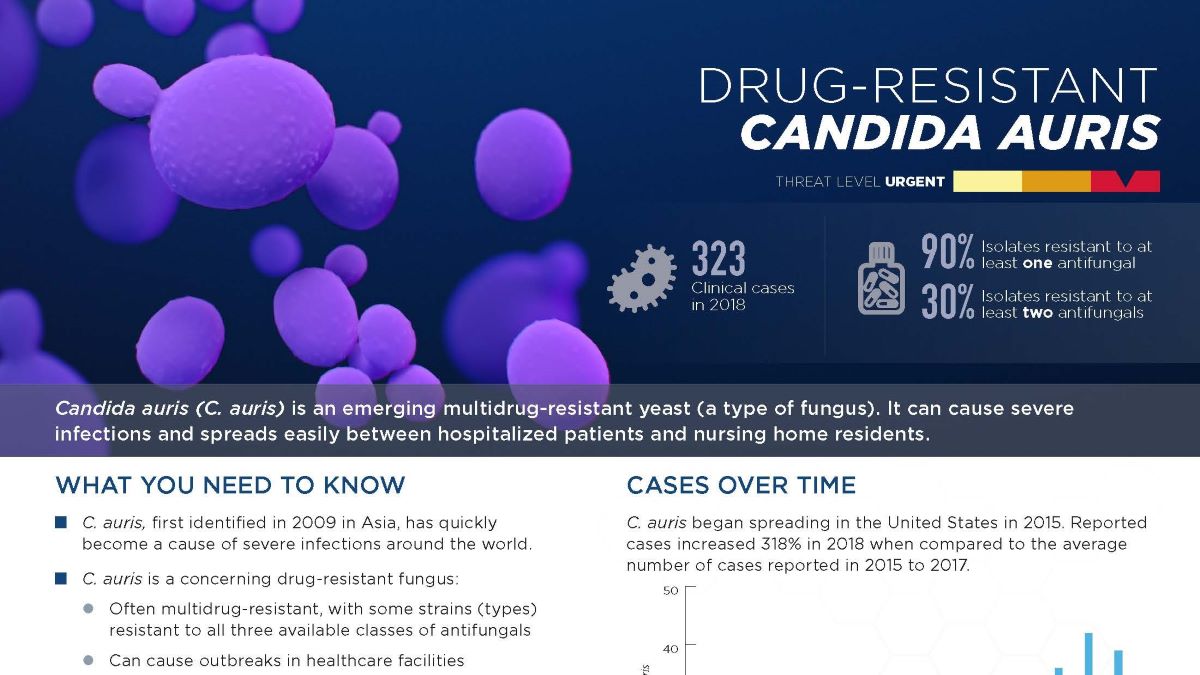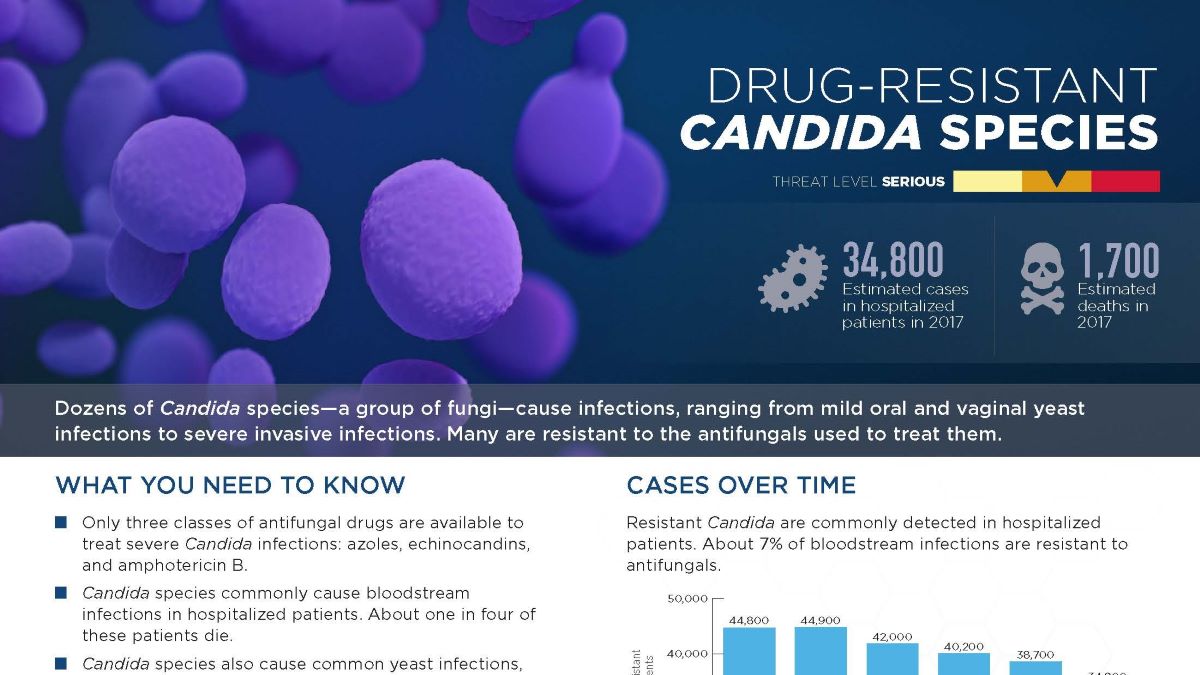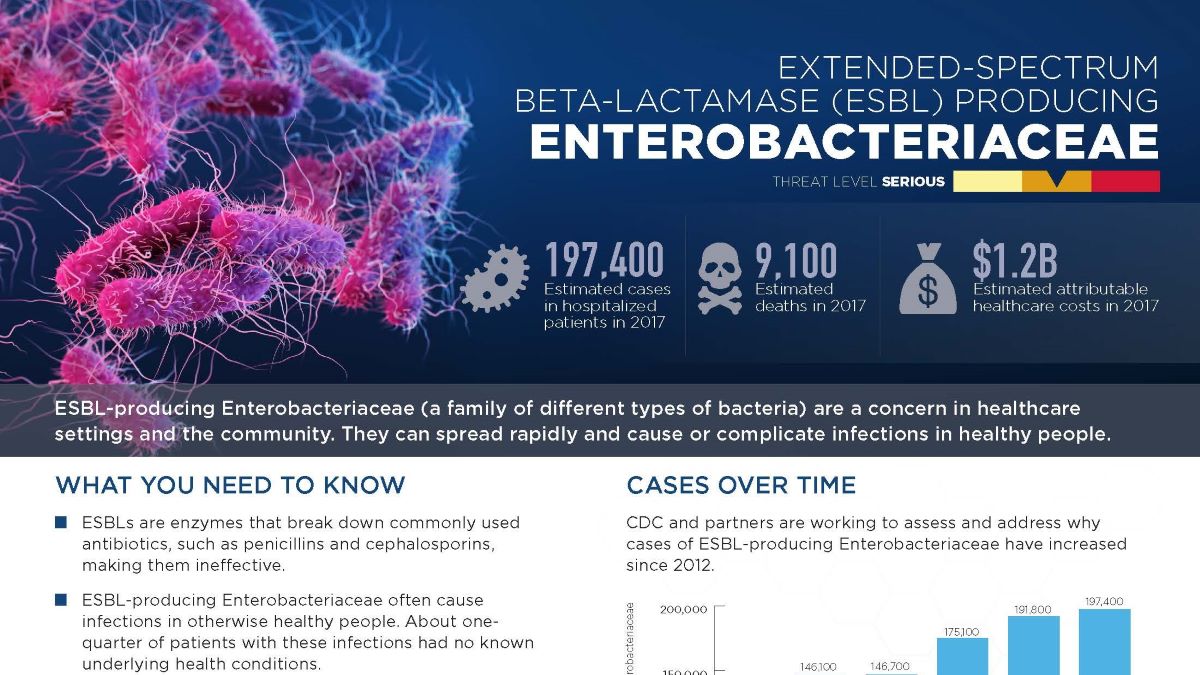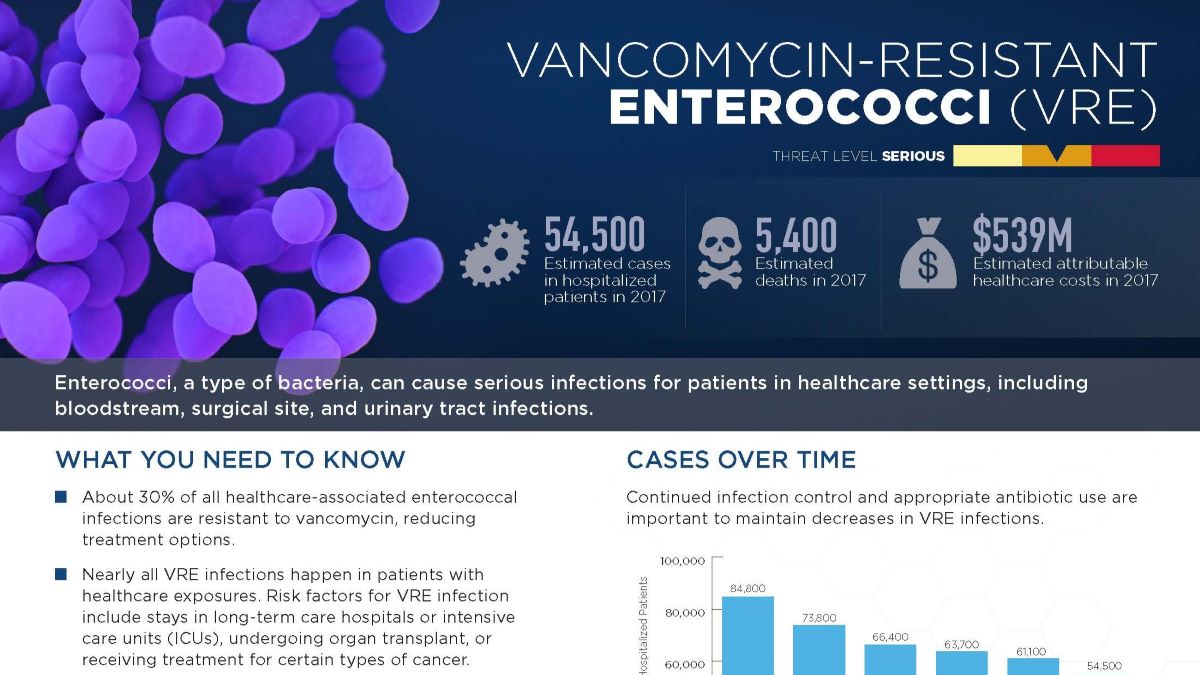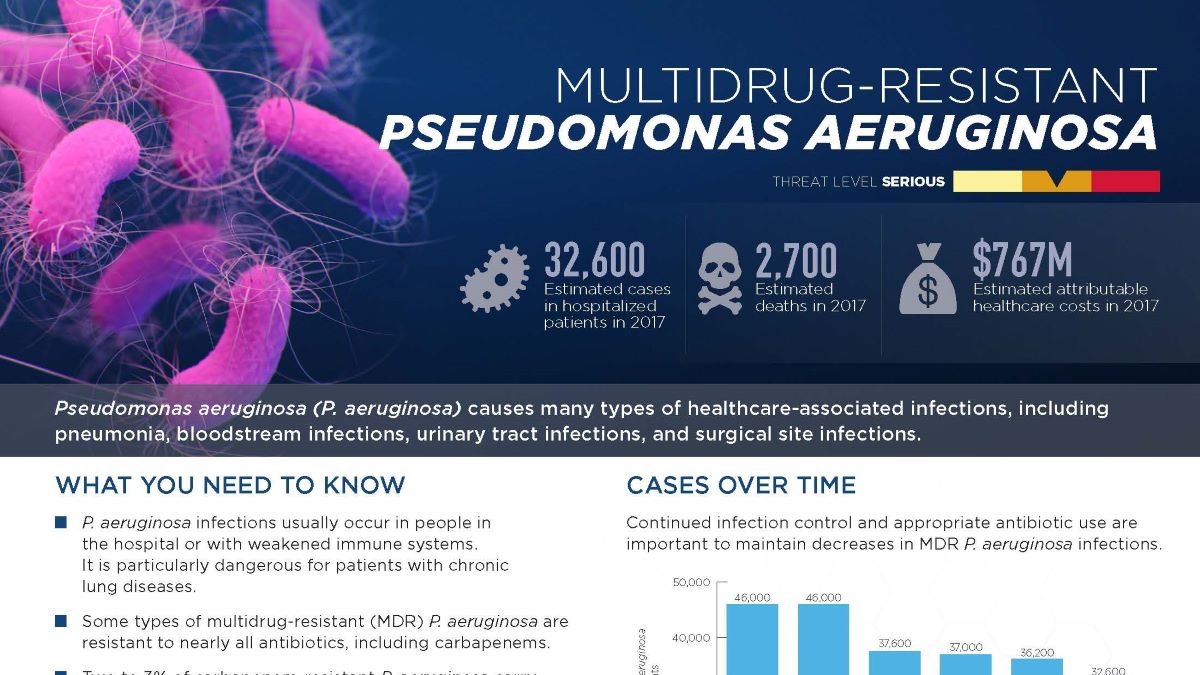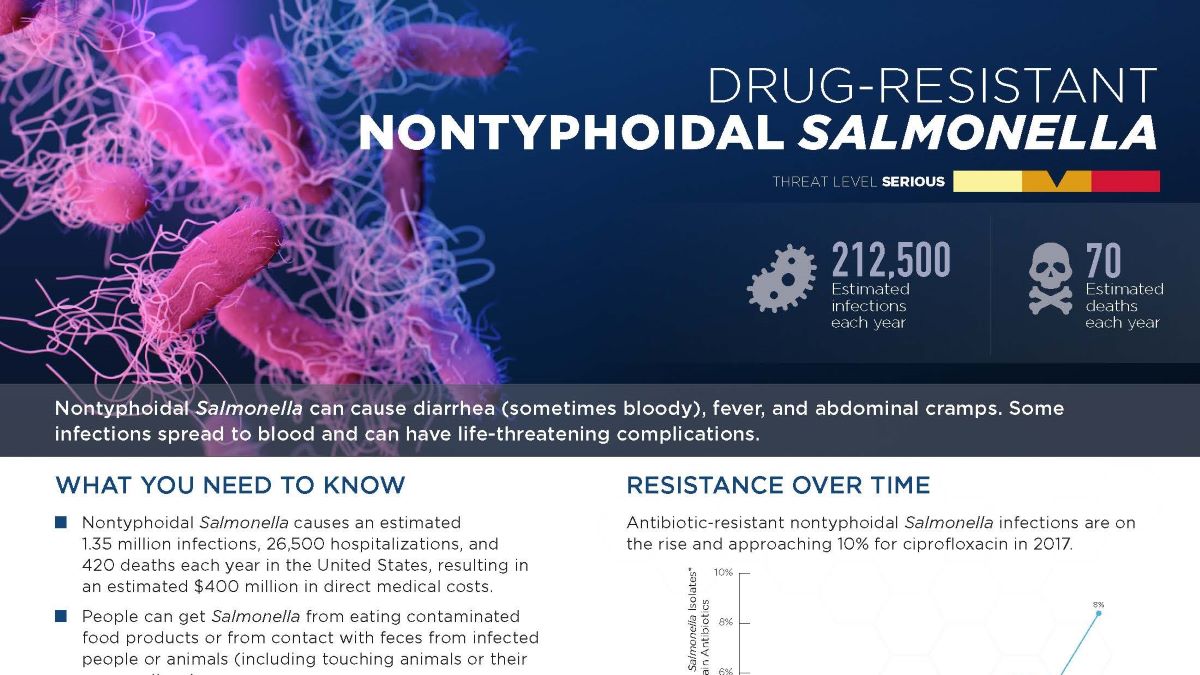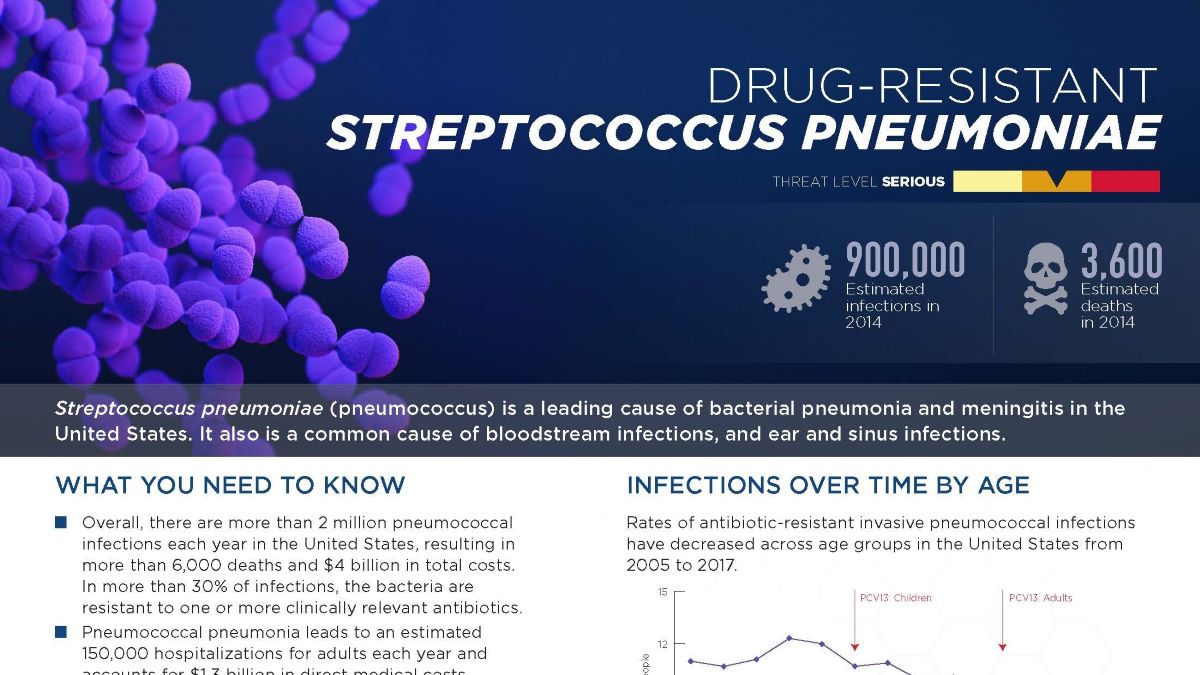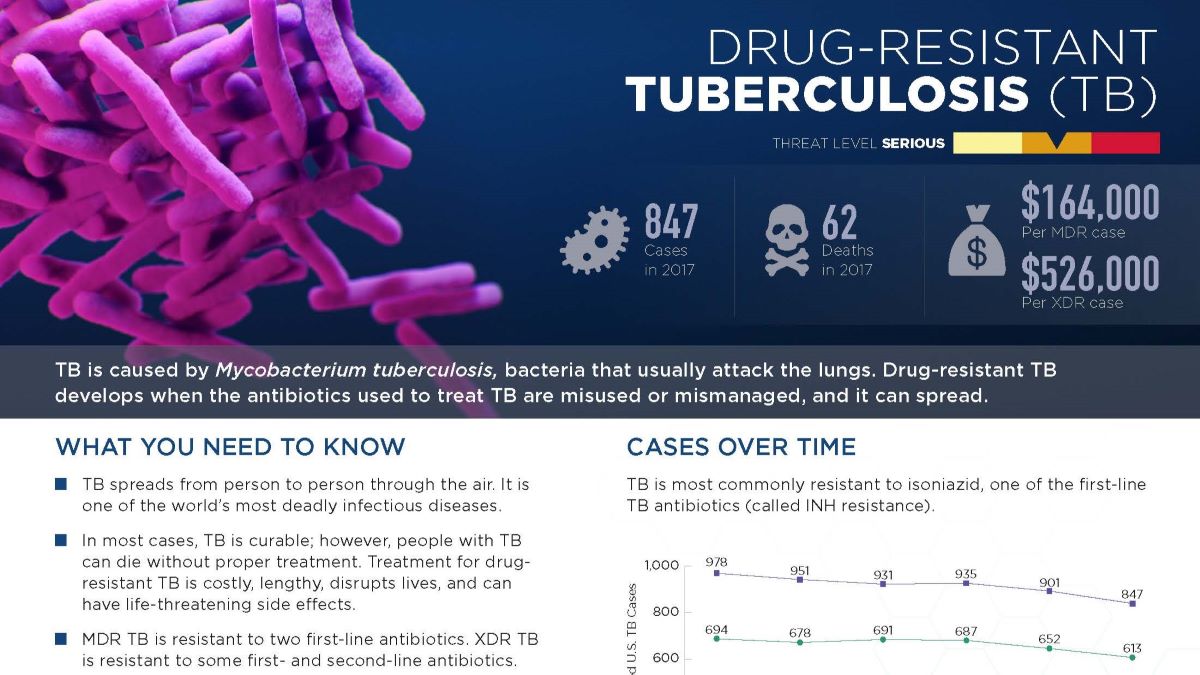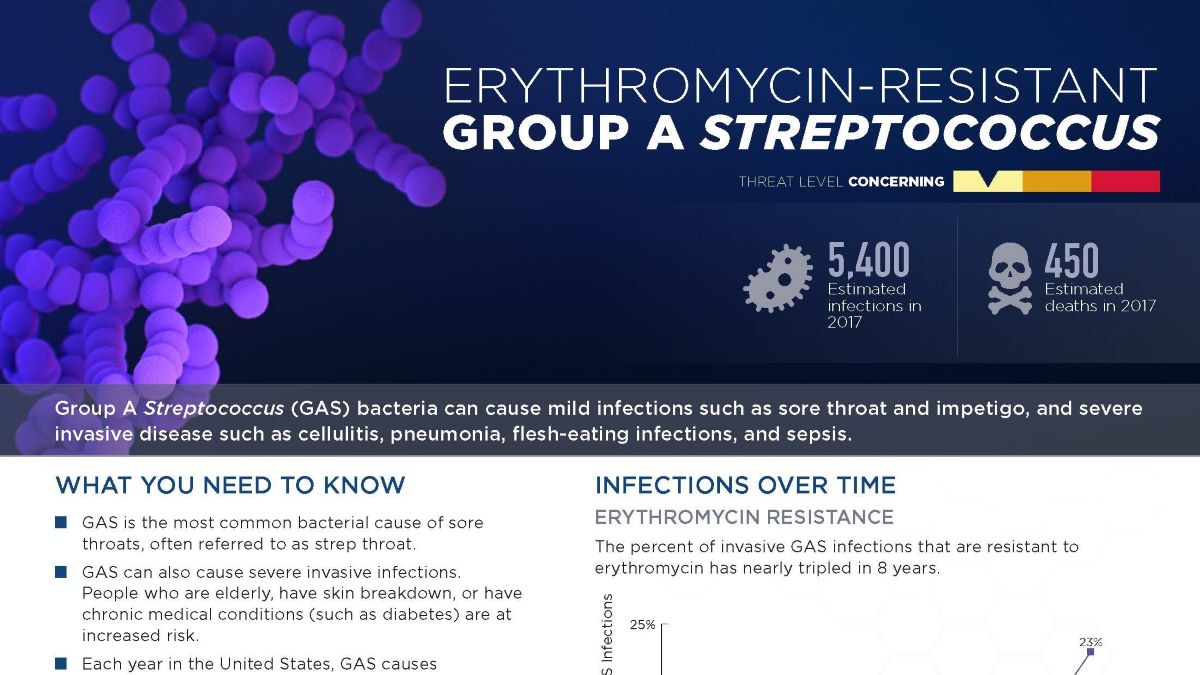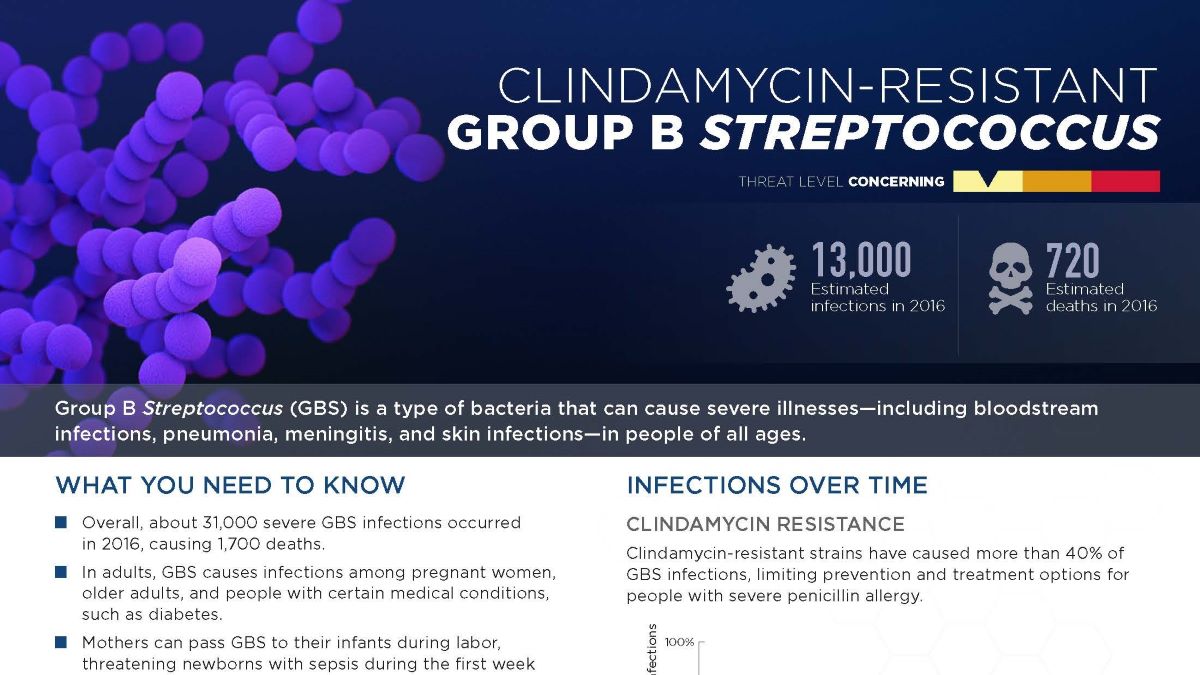Key points
- CDC's Antibiotic Resistance Threats in the United States, 2019 (2019 AR Threats Report) includes national death and infection estimates for 18 antimicrobial-resistant bacteria and fungi.
- CDC lists germs in three categories—urgent, serious and concerning—and a watch list.
- This report underscores the continued threat of antimicrobial resistance in the U.S., the actions taken to combat this threat and gaps slowing progress.

Overview
CDC's 2019 AR Threats Report includes national death and infection estimates that underscore the continued threat of AR in the United States. More than 2.8 million antimicrobial-resistant infections occur in the U.S. each year, and more than 35,000 people die as a result. When C. diff is added to these, the U.S. toll of all the threats in the report exceeds 3 million infections and 48,000 deaths.
The germs are listed in three categories—urgent, serious and concerning—based on level of concern to human health. The report also includes a Watch List with three threats that have not spread widely in the U.S. but could become common without continued aggressive action.
The 2019 AR Threats Report is intended to:
- Serve as a reference for information on AR.
- Provide the latest AR burden estimates for human health in the U.S.
- Highlight emerging areas of concern and additional action needed.
The 2019 report also emphasizes progress in combating AR. However, CDC's 2022 special report highlighting the impact of COVID-19 on antimicrobial resistance in the U.S. found that much of that progress was lost, in large part, due to the effects of the pandemic. The pandemic pushed healthcare facilities, health departments and communities near their breaking points in 2020, making it very hard to maintain the progress in combating AR.
Spotlight
About past and future AR Threats Reports
In 2013, CDC published the first AR Threats Report, which sounded the alarm to the danger of AR. The 2013 and 2019 reports do not include viruses (e.g., HIV, influenza) or parasites. The 2013 report stated that each year in the U.S. at least 2 million people got an antimicrobial-resistant infection, and at least 23,000 people died. The 2013 AR Threats Report helped inform the first National Action Plan for Combating Antibiotic-Resistant Bacteria.
CDC's previous antimicrobial resistance threats reports, published in 2013 and 2019, were important resources to guide U.S. policy for and investments in combating antimicrobial resistance. Starting in 2025, CDC will release estimates for at least 19 antimicrobial resistance threats and an update on the U.S. burden of antimicrobial resistance, by pathogen, in a new electronic format. Going forward, CDC will release new estimates for the burden of these threats at least every two years. Data are critical to guide efforts to combat antimicrobial resistance, and CDC is committed to providing the high-quality data required to steer this important work.
Bacteria and fungi listed in the 2019 AR Threats Report
Urgent threats
Serious threats
Concerning threats
Watch list
Take action
Addressing the threat of AR worldwide requires:
- Preventing infections in the first place.
- Slowing the development of resistance through appropriate capacity and resources like infection prevention.
- Access to antibiotics and antifungals, diagnostic testing and vaccines.
CDC is working with partners to strengthen prevention efforts and improve antibiotic and antifungal use so that the world benefits.
We all have a role to play, from travelers, animal owners, and care givers to patients and healthcare providers. Let's take action.
- Protect Yourself and Your Family | CDC
- Healthcare Providers: Actions to Combat Resistance | CDC
- Health Departments: Actions to Combat Resistance | CDC
- Veterinarians: Actions to Combat Resistance | CDC
- Livestock and Poultry Producers: Actions to Combat Resistance | CDC
What CDC is doing
CDC leads the U.S. public health response to combat AR. CDC's AR Solutions Initiative has heavily invested in domestic capacity to detect, respond, contain, and prevent the spread of resistance across health care, food, environment, and communities. This includes sounding the alarm, and providing the data for action, technical expertise, and support for a domestic infrastructure to respond to AR. To accomplish this work, CDC successfully collaborates with partners across health care, industry, academia, and government.
The world needs heightened vigilance and public health engagement to contain resistance threats whenever and wherever they emerge. Swift public health action is fundamental to save lives.
Resources
- Antimicrobial Resistance Threats in the United States, 2021-2022
- 2022 Special Report: COVID-19 U.S. Impact on AR
- 2019 AR Threats Report
- Free print copy on CDC-INFO on Demand (Pub ID 300754)
- November 2019 press release
- Pathogen Illustrations
- 2013 AR Threats Report
- Latest News and Resources: Antibiotic Resistance
- Databases used for bacterial pathogens analyzed were the PINC-AI Healthcare Database and the BD Insights Research Database. CDC is working on a future publication that will include more detailed data analysis for bacterial pathogens discussed in this fact sheet. C. auris data was obtained by monthly reporting through jurisdiction public health departments.
- The six bacterial antimicrobial-resistant hospital-onset infections include Carbapenem-resistant Enterobacterales (CRE), Carbapenem-resistant Acinetobacter, Methicillin-resistant Staphylococcus aureus (MRSA), Vancomycin-resistant Enterococcus (VRE), Extended-spectrum beta-lactamase (ESBL)-producing Enterobacterales and Multidrug-resistant (MDR) Pseudomonas aeruginosa.

